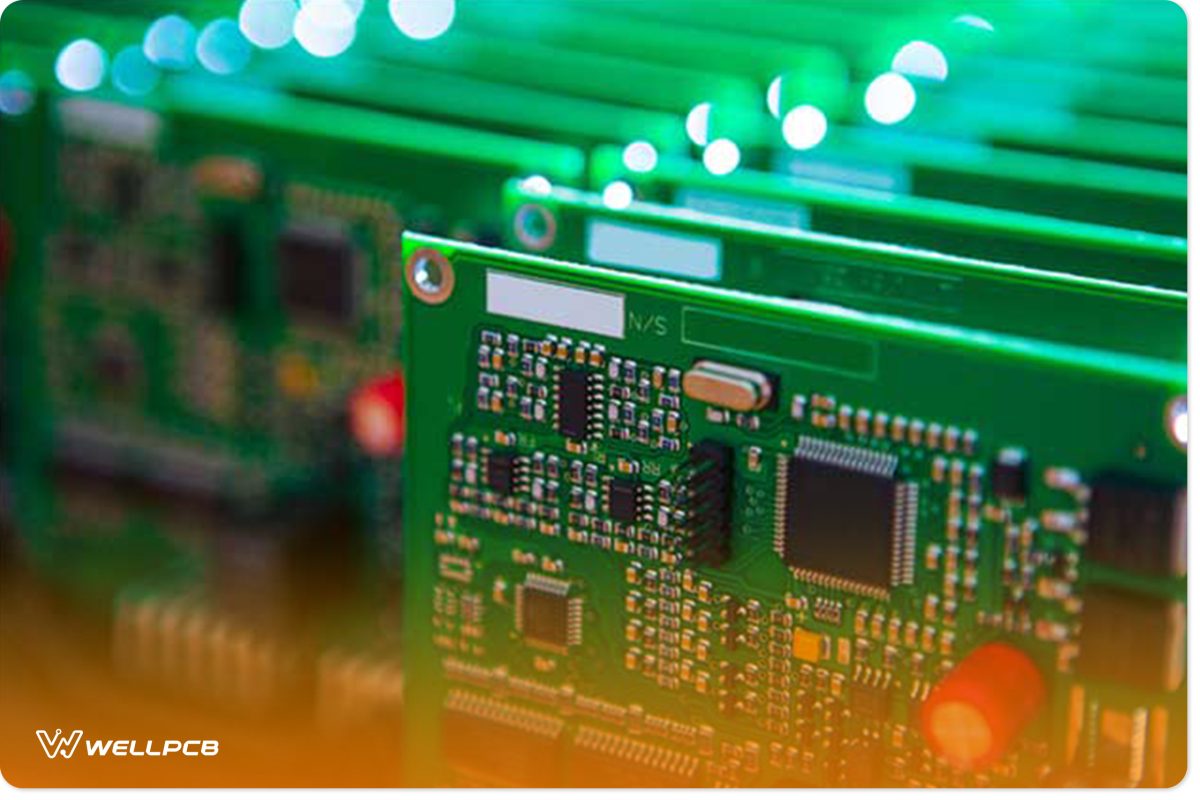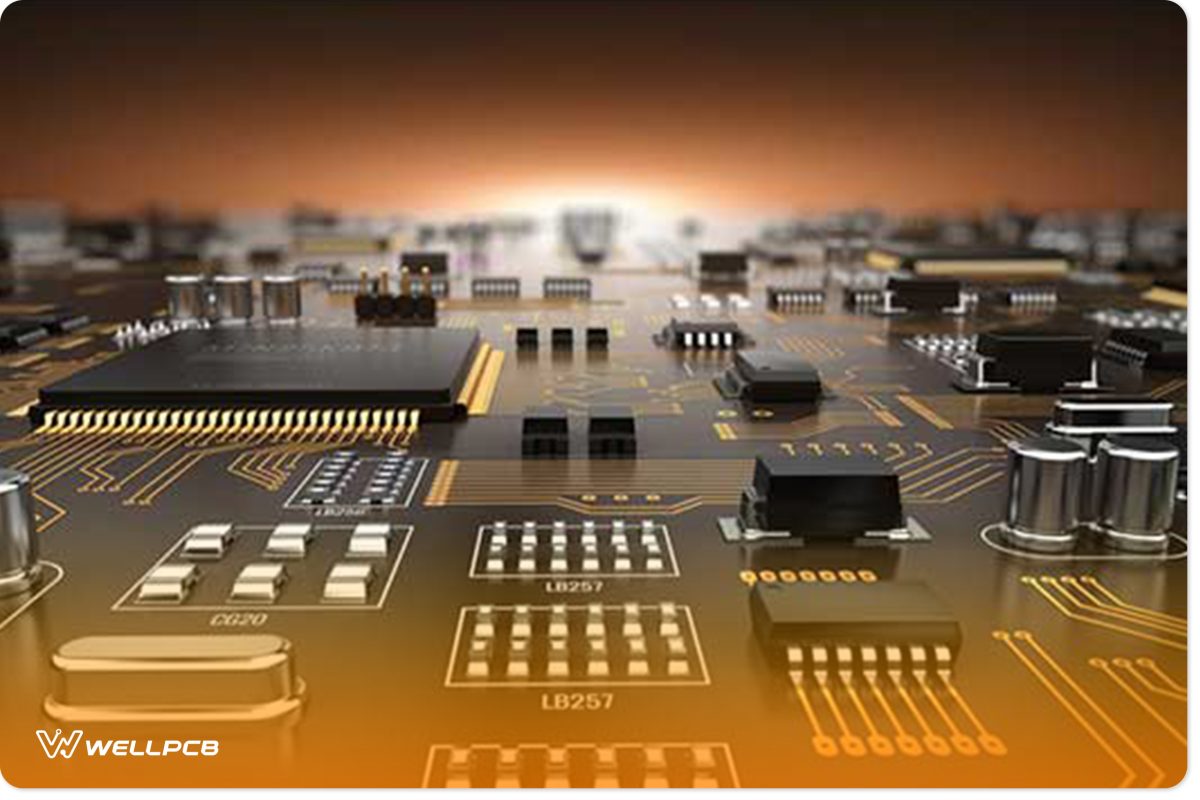Contents
What Is Via Filling?
Visas are usually an integral part of PCB design, and there is a good reason for that. Their task is to ensure signal transfer between the board layers functions properly, which means we can consider vias to be conduits.
A via is nothing more than a copper-filled hole. You can now use a via fill to connect two layers, but there are also designs to connect more.
In some cases, the manufacturers may use other materials, but copper is most frequently used.
The manufacturer will first make a hole through it and then fill it with copper.
The assembler must ensure that the copper is equally distributed in the via. It is imperative to avoid making the outside layer too thick.
If you add an unnecessary amount of copper, the board will be heavier than expected. Additionally, it will increase the price of the PCB while increasing the chances of defects occurring.
Since the overall PCB design is getting more compact-sized than ever, they have also become tiny via holes.
The manufacturers may challenge ensuring everything is done right in a small space, but a reliable company will do the job flawlessly.
What Are the Benefits of a Via Fill PCB?

If you choose a via-fill PCB design, you should know why it is smart. Here are some crucial reasons why you would want to fill out a via:
- Your surface mounts will be more reliable.
- The chance of trapping liquids or air is lower, which increases reliability.
- The assembly yields will be increased.
Copper-Filled Via VS Copper-Plated Via
If we compare the copper-filled design with the one that involves copper plating, we can make some interesting conclusions.
For starters, the filling will enhance the thermal conductivity of the via. That can be vital for the board’s longevity, especially if you plan to use it in an application that needs to withstand high temperatures.
Copper will use its properties to attract heat to keep the other vital board areas cool.
The heat will only move from one copper on the board to the other. That will decrease the chances of a defect in PCB’s areas vital for its functioning.
It is also vital to mention that filling a via with copper also improves electrical conductivity. This approach is suitable if the desired use involves high current levels.
A filled via can be vital in conducting current to all layers while preventing PCB overloading.
What Is the Difference Between Via Plugging, Tenting, and Active Pad?
You have three different options for handling the vias in your PCB structure: tenting, filling, and plugging.
Via Tenting
Via tenting is the most affordable option and is also straightforward to install for the manufacturer. It won’t increase your board’s cost, as you only need to identify the vias for tenting and eliminate mask clearances from them.
The tenting process involves using a solder mask to cover the via hole and annular ring.
You do not have to take any particular actions to be sure the opening will stay closed, so there is no guarantee the hole will remain covered.
However, if you use small vias with a diameter of no more than 12mil, the odds of them staying closed are growing.
As you can assume, closing the hole or opening isn’t the primary priority of tenting.
It covers the annular ring’s main task: ensuring no element exposure and decreasing the risk of circuit contact or accidental shorting.
Via Plugging
If you choose this approach, you will secure covering the annual ring and plugging and sealing it via a mask.
This process has several different names—we call it a mask-plugged via, but it is nothing else than a non-conductive fill.
The most frequent use of a mask-plugged via is noticeable in a BGA design. There, we can find vias placed close to the SMD pads of a BGA.
The disadvantage of plugging may be noticeable during the assembly process. The solder may detach from the pad and go down, causing non-existent or weak solder joints.
Via Active Pad
We also know this process via the pad and can see more daily applications. It is a useful option when we notice that everyone tries to make BGA packages as tight as possible.
The manufacturers usually use a land pattern called a “dog bone” to ensure that via receives the signal from the BGA.
Via can then pass this signal throughout different layers.
A via pad changes the “dog bone” approach and allows the manufacturer to drill the vias directly into the BGA pads.
You can solder straightly over the via, which ensures easier routing.
Why Is Copper a Better Choice than Gold for a Via Fill PCB?

We have already established that copper is the most common choice for a via-fill PCB. However, some designers and applications use silver-conductive epoxy resin.
When you compare the two materials, the latter may seem like a better choice.
However, there are valid reasons why copper is a better choice. In short, it performs better than gold. But instead of only making a claim, we will support it with the following facts:
- Copper has improved thermal and electrical conductivity compared to gold
- It should also ensure that the PCB lasts longer
- Copper has an impressive ratio between cost and effectiveness, which makes it an excellent value for money
- The boards that use copper for via fills have increased reliability
- Copper is the logical choice for applications that require high-power
As you can see, the decision should be quite simple. Not only is copper more affordable, but it also performs better than gold. Regardless of your desired application, it would help if you always went with copper. In most cases, it will meet and exceed your expectations.
Conductive VS. Non-Conductive Via Fill PCB: How to choose
Finally, we will offer some factors you may consider when choosing between the two via fill PCB approaches:
Conductive Via Fill PCB
Consider your particular board application if you wonder when a conductive would be a good choice. If you have a plan involving a high level of current or heat and want to find a way to carry it throughout the board, you can consider a conductive via fill.
A conductive fill is a smart pick if you are worried about the board overheating. The fill has metallic characteristics, and its working process reminds us of a radiator. That means it will attract the heat and naturally distribute it to the other board sections.
It would help to consider the disadvantage of using a conductive via fill. It lies in how its thermal expansion coefficient (CTE) differs between the metallic fill and the laminate around it. Metal tends to expand quickly when heated, and laminate is slower. That may result in fracture defects, so you must ensure that a conductive fill fits your application correctly.
Non-Conductive Via Fill PCB
If you speak the term non-conductive out loud, it may not sound like it deserves consideration.
You may think that a non-conductive via fill cannot get an electrical signal to pass through the via. It is essential to mention that it is a misconception.
Even in non-conductive fills, copper is still used to plate via barrels. This approach’s primary distinction is using a fill material instead of leaving a barrel with empty air. This technique aims to keep contaminants, such as solder, from penetrating the via.
We already mentioned that mask-plugged vias and non-conductive fills are the same thing, so don’t let that confuse you.
How to Choose Between Conductive VS. Non-Conductive Via Fill PCB

Consider your application – the best board design is the one that perfectly suits your use and application.
Remember the price – you want the highest value for money and a high-performing PCB, but the idea is not to overpay abroad.
Aim to make the design as straightforward as possible – while a complicated design may be suitable in some cases, simple boards tend to be exceptionally reliable.
If you need advice on choosing the right via fill, don’t hesitate to contact WellPCB. This company has an experienced team ready to help you choose the perfect board for your application.
The skilled staff will also ensure that the assembly process is taken care of and that your boards are manufactured in the shortest possible timeframe.
Conclusion
We hope you now have the necessary information about via-fill PCB design and the know-how to choose between a conductive and non-conductive approach.
If you are still unsure, the best thing you can do is rely on an experienced manufacturer.
They can help you choose the smartest option for your application, maximize your board’s reliability, and optimize the cost!





